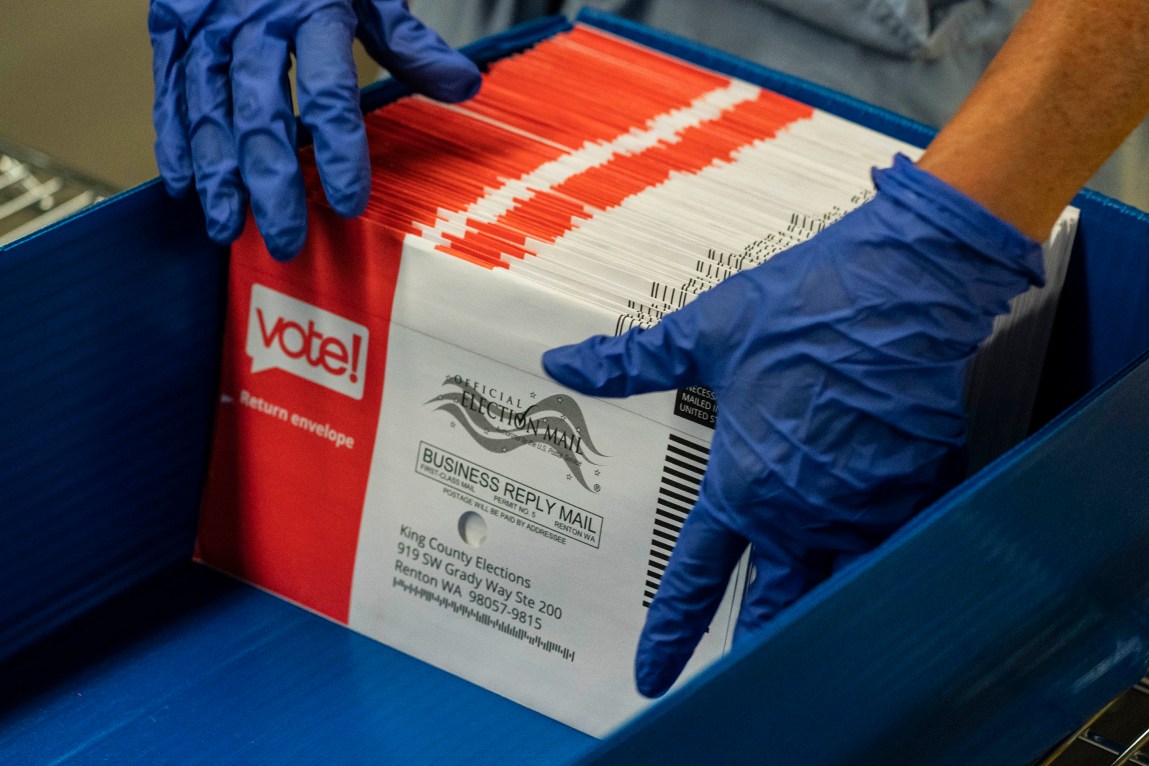In the midst of the pandemic, mail-in voting is expected to play a bigger role in this presidential election than ever before. As part of our Electionland project, we work with U.S. journalists to cover the voting process, so we’re offering some tips for local reporters to tackle coverage of voting by mail.
Learn the Process
- Find out your state’s current policy and laws on mail voting. Who is eligible to vote by mail? How has the process changed? Is the mail voting process currently being challenged in litigation? If so, obtain a copy of the lawsuit, read the complaints and responses and, if necessary, reach out to the plaintiffs, defendants and their attorneys.
- Look up your state’s voter ID and witness signature or notary requirements. Are any of these requirements currently being challenged in litigation?
- If your state requires a government-issued ID for mail voting and the department of motor vehicles is closed, ask local election officials how voters are expected to acquire identification.
- Determine how voters can request a mail ballot. Do they need a printer and a stamp? Can they apply online?
- Ask to see a sample absentee ballot application and sample mail ballot. Ask election administrators how applications and ballots should be filled out, including signatures and candidate selections.
- Find out the deadlines for absentee ballot applications and postmarked ballots, and if these dates may change as a result of litigation. Do these deadlines allow enough time for ballots to reach the voter’s home and then be mailed and counted, given the pace of Postal Service deliveries?
- Determine if your state or county is paying for postage on mail ballots. If not, contact your local post office and ask what its policy is on ballot postage.
- Learn how many drop boxes will be set up in your state or county. If there won’t be any drop boxes, or the number is restricted, find out why.
- Research your state’s “cure” process for notifying voters that there was a problem with their mail ballot and instructing them on how to fix it. How are voters notified? How can they resolve the problem? How long do they have to do so?
- Ask election administrators what voters should do if they don’t receive their mail ballot, or if it doesn’t arrive in time. Will they be able to cast a regular in-person vote, or will they need to cast a provisional ballot? What if they can’t physically go to the polls?
- Need a starting point for some of this research? The Vote at Home Institute has a variety of resources, including a guide to mail voting procedures by state, mail policy changes and 2018 mail voting rates by state, and a research guide on mail voting. The National Conference of State Legislatures and the Lawyers’ Committee for Civil Rights also have guides on mail voting rules. The Brennan Center has a state guide to voting laws and procedures and a voting litigation tracker. Make sure to check with state officials about any recent policy or litigation changes.
Read More
Evaluate Preparedness
- Find out how many people cast a mail ballot in your state or county in 2016 and 2018. You can find that data through the Election Administration and Voting Survey (EAVS). It’s a good idea to look at both mail ballots and Uniformed and Overseas Citizens Absentee Voting Act (UOCAVA) ballots.
- If your state or county hasn’t traditionally dealt with a large number of mail ballots, you should ask local election administrators:
- What, if any, coordination have you done with the local post office? Have you taken steps to ensure ballots will be identified, and postmarked by the required date?
- What equipment are you using to sort and count ballots, insert them in envelopes, and remove them from envelopes? Did another government office lend you equipment, or have you retrofitted existing equipment? How much did this equipment cost, and where did the funding come from (federal aid, state budget, etc)?
- How much funding is dedicated to voter education and what is the source of the funds? What have you done so far to teach voters how to vote by mail?
- Contact the local post office to find out what changes it is making to accommodate an increase in mail ballots. Find out what, if any, impact the recent USPS structural overhaul is having on local operations. How many workers have tested positive for the coronavirus, and has their absence affected operations or slowed deliveries? Have they been replaced, and if so by temporary or full-time workers?
- Use EAVS data to look at the number of rejected mail ballots and the reasons for those rejections. Ask election administrators what they’re doing to address the most commonly cited reasons.
- Look up your state’s report on CARES Act grants on the Election Assistance Commission website. Find your state’s plans for distributing federal funding for elections, and how the money is already being spent. If counties in your state were required to submit a plan to get the funding, make a public records request for the plan.
Show and Tell
- Explain the process for mail voting and how to fill out a mail ballot properly. Video can be especially useful.
- Tell voters what they need to do to cast a mail ballot successfully, including deadlines to request and return ballots, and signature and ID requirements.
- Ask election administrators for a tour of where ballots are stored and counted. Ask them to demonstrate security measures in place.
- Ask officials how drop boxes work, how often they’re checked, and how they’re monitored.
- In some states, mail voting rules are being challenged in litigation. Make clear in your reporting what the current rules are, the status and authors of the lawsuits and how the rules may change.
Want to get more tips and guidance on voting reporting? Sign up to become an Electionland partner and help us cover the election.












